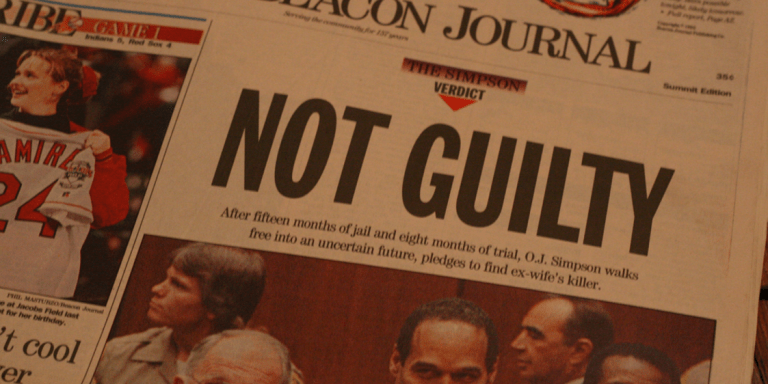
After the response to this recent LifeHacker piece, I thought I would explain the system I use to take notes, research books and keep track of anecdotes, stories and info I come across in my work.
This isn’t the perfect system. It might not work for you. All I can say is that since learning it about 7 years ago, it has totally transformed my process and drastically increased my creative output. It’s responsible for helping me publish three books in three years, (along with other books I’ve had the privilege of contributing to), write countless articles published in newspapers and websites, send out my reading recommendations every month, and make all sorts of other work and personal successes possible.
Now to be clear, this is not “my” notecard system. If anything, I use a perverted version of a system taught to me by the genius Robert Greene, when I was his research assistant. What he taught me was neat, clean and orderly. Mine is more of a mess. But it’s still be hugely helpful to me and I think I’m in a unique position to explain this method to people.
I hope it inspires your own method.
The System
-It’s difficult to describe this in any linear way so I am just going to do this in kind a brain dump way. By the end of it, I promise the system will make sense.
-If I have a thought, I write it down on a 4×6 notecard and identify it with a theme–or if I am working on a specific project, where it would fit in the project. For instance, as I was preparing for my next book, The Obstacle is The Way, I filled out thousands of these cards for ideas and concepts that I wanted included in the book. Some examples:
- “Don’t be the slave of circumstance.” (intro)
- “We know objectively that we learn from failure, yet we spend all our time trying to avoid it. Why?” (intro)
- “Gaman–the Japanese word for endurance” (Persistence)
- “Our actions our constrained, our will is not. We always decide whether we continue or not.” (Will)
- “Ulysses S. Grant–incident at Mathew Brady’s studio where glass fell on him and he didn’t move. Also, where he ran toward the explosion at City Point. See: Simpson’s bio” (Nerve)
So those are the kinds of notes I write to myself. Either sentences in my own writing, words I like, questions I have, or examples I think might fit somewhere and want to learn more about.
-Most of the time, what I write down are quotes (I used to put them on a blog instead but it was too unwieldy). They’re either famous quotes or quotes from the writer that I think are smart. It’s very important that you mark quotes properly so you never risk forgetting to attribute. To make this extra clear, I always put a circle around the first quotation mark. If I am quoting someone quoting someone else, I’ll usually write “qtd in.”
-If it’s a really long story or example, I will just jot down a few notes on the key points and then put something like: “For a story about _________ see: pg 14 in [insert book].”
Here are some quotes from my Strategy cards:
- “It is better to see once than hear a hundred times.” – Gorbachev
- Retort: “You may not be afraid to have your hand cut off, but your body will suffer.” – John D. Rockefeller
- “Politeness is to human nature what warmth is to wax.” – Schopenhauer pg 77
- “Pursuit should be to the last breath of man and beast.” – (Prussian Maxim qtd in Knights Cross)
- “All men work more zealously against their enemies than they cooperate with their friends.” – Caesar qtd in Schiff’s Cleopatra pg 19
- “Find them! Fix them! Fight them! Finish them!” – Gen. Ridgway/military slogan in Korean War. qtd in Savior Generals.
So those are the kinds of quotes I grab for one particular topic. Most of the quotes are longer than that, but space is constrained here in this post so I won’t rewrite the longer ones for you. For longer quotes, I will type them out and print them. Then I cut them out and tape them to a notecard.

-I’ve talked about this before, but the key to this system is the ritual: Read a book or an article and diligently mark the passages and portions that stand out at you. If you have a thought, write it down on the page (this is called marginalia). Fold the bottom corner of the page where you’ve made a note or marked something (alternatively, use post-it flags).
-A few weeks after finishing the book, return to it and transfer those notes/thoughts on to the appropriate note cards. Why wait? Waiting helps you separate the wheat from the chaff. I promise that many of the pages you marked will not seem to important or noteworthy when you return to them. This is a good thing–it’s a form of editing.
-In the top right hand corner of each card, put a theme or category that this card belongs to. If a card can fit in multiple categories, just make a duplicate card. Robert uses color coded cards for an extra layer of organization.

Some categories I currently use:
- Stoicism
- Life (General advice about life)
- The Narrative Fallacy (Something I’d like to write a book about one day)
- Strategy (Examples of strategic genius or wisdom)
- Post Ideas (Many cards here have been turned into articles you’ve read)
- Animals (Weird stories about animals. For instance, according to the book One Summer by Bill Bryson, the hotel that Babe Ruth lived in for most of his career had a live seal living in the lobby fountain)
- Trust Me, I’m Lying (Media manipulation)
- Writing (Wisdom about the craft)
- Education (Wisdom and ideas about learning)
- -Misc (Naturally)
-As you compile cards and study different things, it’s not uncommon to organically begin coming across unexpected themes. This is how new categories are born.
-If you are working on a book project where there are a limited amount of themes or you know exactly what they are, it makes sense to introduce a shorthand. For instance, with my last book Growth Hacker Marketing, I had 6 themes that roughly corresponded with the chapters and structure of the book:
- 1) Intro
- 2) Growth Hacking
- 3) Product Market Fit
- 4) Growth Hacks
- 5) Virality
- 6) Optimization and Retention
- (Misc)
-If anyone hassles me about my sloppy handwriting in the photos, I swear to god…
-Originally I would do one set of note cards for a whole book (numbering the cards 1,2,3,4,5 etc–but I found that limited my ability to move the pieces around because unrelated but important ideas were wrongly joined together.
-I think it’s important that the notes are not just about work. In mine, my two most important categories are “Life” (which is mostly advice for myself) and another called “Me”, where I put things that I think are important criticisms or places for improvement in my own life. (By that I mean stuff about dealing with parents, relationships, etc. Just little reminders that help.)

Here are some cards from those sections:
- “He’s detached about your pain, but God knows he takes his own pain more seriously than cancer… It finally dawned on me that my father, for all his protestations and lectures and writing about detachment, is a very, very needy man.” Margaret Salinger, qtd in Salinger pg 570 (Me)
- These people don’t work hard enough for their opinions to matter to you. (Life)
- “Just because you’re winning a game doesn’t mean it’s a good game.” Seth Godin, Icarus Deception (Life)
- “Q: Ok, but what should I be most worried about here? A: Nothing should worry you” conversation with a friend (Me)
- “Character is fate.” Heraclitus (Life)
- “If you see fraud and do not say fraud, you are a fraud.” – Taleb
- Don’t pick fights with members of your own team. (Life)
- “You know workmen by the chips they leave.” – Old saying (Life)
-Don’t stress about filling up whole cards. I have hundreds that just have a ONE or TWO words on them. These might be cool new words that I’ve never heard before, words I think have a lot of meaning in them, reminders about topics I want to mention.
-Helpful tip: If you end up using the back of the card (I do it fairly often), put an arrow on the front side. Sometimes when you’re flipping through them, you miss the fact that there is text on the back.
-Get in the habit. If you have an idea, put it on a damn card. If you don’t, you’ll regret it. I can’t tell you how many times I saved my ass writing down a title idea or a thought, I otherwise would have forgotten. It’s a good thing when your own cards surprise you.
-When I go back through the cards, I’ll often remember other things from more recent reading or thinking and add to them. This is why, if you went through all mine, you’d see different colors of ink on the same card.
Other People Who Use This
-I want to be clear that I’m not the one who invented this. I didn’t even perfect it. I’m just explaining it because people asked.
-Here’s Robert explaining his system in an interview with Andrew Warner at Mixergy (he shows one of his boxes on camera if you feel like looking):
I read a book and I take, as I’m reading it, I underline it and put notes on the side and then I go back and put them on notecards. And I can gauge a good book will generate 20 to 31 notecards. A bad book will generate two or three notecards and I will find themes in this book and I will take a book that’s maybe not organized very well and I will do the organizing. On page 30 you talk about this and you talk about it on page 180, you should have put those two together but I’m going to put those two together. And I find the themes in there and I break the book down into the gist of it, the heart of it.
And, I categorize it later as I move into the process, I see these themes and patterns that you were talking about that an apprenticeship, creativity, working with a mentor, social intelligence. Slowly the chapters come to life and I’m now able to organize it in various chapters. Each part has the title of the book on it and is color coded, having different colors of cards, depending on the kind of subject that I’m dealing with. If it’s the arts, science, politics, etc. It’s elaborate. You don’t want to know everything about it, but with this there now, if I’ve done all that work and I sit down to write, I have at my fingertips, all of this. If I want to do Leonardo da Vinci, I have 50 notecards that break him down from every possible angle. I can now, with that, write in a much fuller, deeper, dimensional way because I’ve taken all this information and I’ve organized it.
-Someone also asked him about it in his Reddit AMA. Here is that exchange with some info about the color coding:
user: Robert, I’m a big fan of yours. In one interview you mentioned your research method for your books (with index cards and shoe boxes). Could you provide some more detail on the process of your method?
[–]robertgreene I read a book, very carefully, writing on the margins with all kinds of notes. A few weeks later I return to the book, and transfer my scribbles on to note cards each card representing an important theme in the book. For instance, in Mastery, the theme of mirror neurons. After going through several dozen books, I might have three hundred cards, and from those cards I see patterns and themes that coalesce into hardcore chapters. I can then thumb through the cards and move them around at will. For many reasons I find this an incredible way to shape a book.
user: Ah–found it! Still curious about the colors, but I guess the obvious answer is that they would represent categories, topics, and the like. :)
[–]robertgreene The colors represent categories, you are correct. So, for instance, with the War book, blue cards would be about politics, yellow strictly war, green the arts and entertainment, pink cards on strategy, etc. I could use this in several ways. I could glance at the cards for one chapter and see no blue or green cards and realize a problem. I could also take out all the cards of one color to see which story I liked best, etc. It also made the shoebox look pretty cool.
user: That’s ingenious–so you’ve effectively created a relational database in a shoebox, because you can have many to many relationships between card colors and chapters. Your passion for organization is one of the (many) things that makes your work so incredibly fun to read and reference. Thank you for sharing some of that with us.
-It looks like the system is also very similar to Luhmann’s Zettelkasten. Though again, his discipline seems to exceed mine because I am a lot less ordered.
–Ronald Reagan also kept a similar system that apparently very few people knew about until he died. In his system, he used 3×5 notecards and kept them in a photo binder by theme. These note cards–which were mostly filled with quotes–have actually been turned into a book edited by the historian Douglas Brinkley. These were not only responsible for many of his speeches as president, but before office Reagan delivered hundreds of talks as part of his role at General Electric. There are about 50 years of practical wisdom in these cards. Far more than anything I’ve assembled–whatever you think of the guy. I highly recommend at least looking at it.
-It’s not totally dissimilar to the Dewey Decimal system and old library card catalogs.
-I’m sure there are other awesome people who use a similar system. If anyone has examples, send away!

FAQ
What do you use these note cards for? Whatever I want! Recently I started tweeting quotes that I had taken note of. But that’s just a little thing. I use these notecards for my life. When I have a problem, I flip through them. When I am looking for material in my writing, I use them. For instance, I wrote this post exclusively off my notecards (if you couldn’t tell).
How do you know what to write down? You just write down whatever you want. Don’t stress about it. This is your system. We all have our own preferences. Personally, I look for actionable, small sized chunks.
Where do you put the cards? I have one big box that I used that’s actually meant for photos. It’s called a Cropper Hopper. But it took me a long time to acquire enough cards to need that. Before, I used the smaller Vaultz 4×6 Index Card File boxes. There are also cheaper cardboard versions out there.
What do you do when a box gets full? If I am taking notes for a specific project, like a book, I give it it’s own box. For instance, my Cash Money book is just about at the stage where it can fill up a Vaultz box. After another hundred or so notecards, I’ll move it into it’s own Cropper Hopper.
Wouldn’t digital be easier? Yes. But I don’t want this to be easy. Writing them down by hand forces me to take my time and to go over everything again (taking notes on a Kindle is too easy and that’s the problem). Also being able to physically arrange stuff is crucial for getting the structure of your book or project right. I can move cards from one category to another. As I shuffle through the cards, I bump into stuff I had forgotten about, etc.
Isn’t it hard to carry around? Yeah, a little. But so what? It pays off so it’s worth it. Joking aside, what I tend to do is just take the section I am working on with me. If I am working on chapter 2–I take those cards. If I am writing a post about education, I’ll take the education cards with me. Very rarely do I find that I need the whole thing with me.
How do you remember it all? That’s why doing it physically is so important. I am invested in each one of these cards. I made them and arranged them with my own hands. This tactile relationship helps. As one reader put it, it helps make a “memory palace.” I don’t vaguely remember what I put on the note cards, but where I put it, what it’s connected to, what’s around it, when I did it, etc.
Do you review the cards? Absolutely. If I am lacking inspiration or just kicking something new off, I always try to flip back through them. It doesn’t have to be all of them either. Just grab a few. Another example: When I wrote the new foreword for Trust Me I’m Lying, I started by going back through the cards. When I starting prepping the paperback of Growth Hacker Marketing (out in 2014), I went through the cards and was able to find a place for some that I hadn’t used the first time.
But wouldn’t Evernote be better? Maybe for you but not for me. If that’s what you want to use then go for it. But I think there is something irreplaceable about the physical aspect. Physical books, physical notecards, that’s the best in my opinion.
What if something happened to your box? My house recently got robbed and I was so fucking terrified that someone took it, you have no idea. Thankfully they didn’t. I am actually thinking of using TaskRabbit to have someone create a digital backup. In the meantime, these boxes are what I’m running back into a fire for to pull out (in fact, I sometimes keep them in a fireproof safe).
Remember there is no right and wrong way to do this. The system that I have was taught to me by someone and I made my own modifications. His way works best for him, and I have a way that works better for me.
Make your own way. But I think you’ll love this system. ![]()





